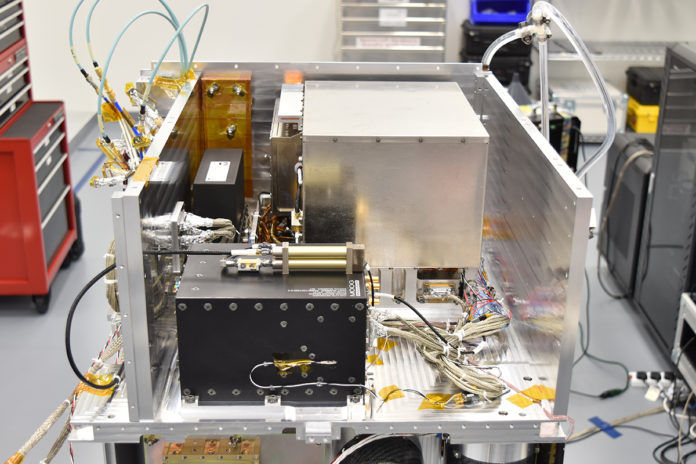
The evolution of clock surprises everyone. Especially, the atomic clock, which is an extremely accurate type of clock. Atomic vibrations regulate it and is known for the exact time.
NASA has now prepared a next-generation atomic clock. The space agency developed it in early February.
NASA’s Jet Propulsion Laboratory developed this Deep Space Atomic Clock. On Feb. 17, JPL engineers monitored integration of the clock on to the Surrey Orbital Test Bed spacecraft at Surrey Satellite Technology in Englewood, Colorado.
Out there in space, where normal clocks do not help, this helps them keep track on time. In the spacecraft navigation, timekeeping plays a critical role. According to NASA, this will be especially important for future deep space missions.

Credits: Surrey Satellite Technology
The clocks features make it more easy for use. It is smaller, lighter and magnitudes more precise than any atomic clock flown in space before.
Generally the spacecraft are tracked using “two-way” methods. The ground-based antenna ‘pings’ the spacecraft and waits for the signal to return. The scientists then calculate the distance to the spacecraft depending on how long the signal takes to travel. A navigation team then processes this information to determine the spacecraft’s flight path. They also determine the course corrections required.
Unlike this, the clock enables “one-way” tracking. Here the spacecraft doesn’t need to send the signal back to Earth. The team will take the tracking measurements on-board and make necessary changes in its course.
The Deep Space Atomic Clock will be a key advance for safely navigating future human exploration of the solar system. This will provide astronauts their position and velocity when they need it. It will lighten the load on the antennas in NASA’s Deep Space Network. This would help track more spacecraft with a single antenna.
This will also improve the precision and quantity of the radio data used by scientists for determining a planet’s gravity field.
The Deep Space Atomic Clock will join the spacecraft and will start orbiting in late 2017.
























